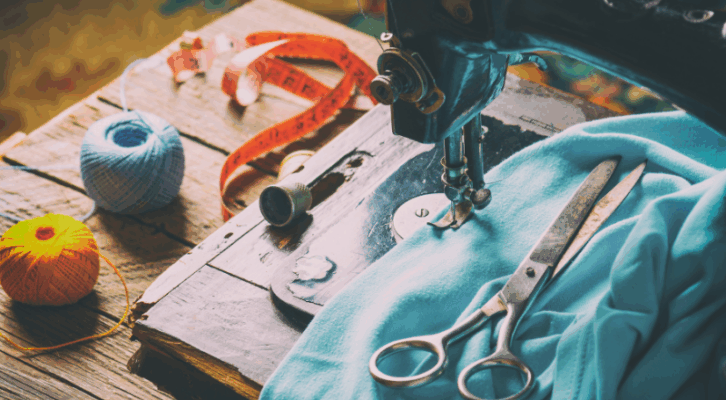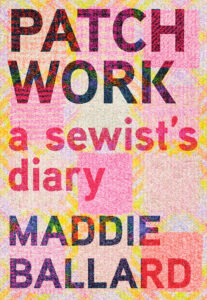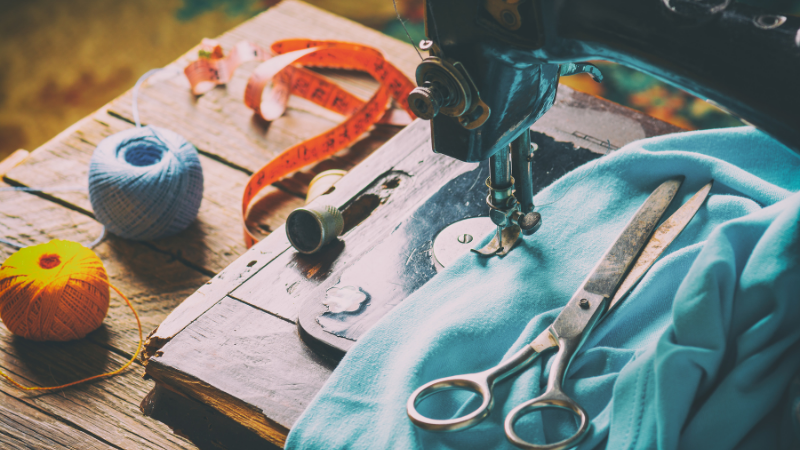
Maddie Ballard on Using Sewing as
a Way to Look Forward
In June 2020, my partner and I moved home to Aotearoa New Zealand after two years in the UK. It was the middle of Covid, so we moved in with my partner’s parents, where I spent much of my time consuming massive quantities of chocolate and doomscrolling between cover letters.
Article continues after advertisement
This turned out to be a good thing.
One day an acquaintance posted a photo on Instagram of a beautiful skirt she’d made. I hadn’t thought about sewing my own clothes since fabric tech class at high school, but I needed something to do. My partner’s mum had a sewing machine and generously showed me the ropes.
Over the next few months, I became an obsessive sewist. I made a wardrobe of wonky, lovely garments—summer dresses, merino turtlenecks, a corduroy jacket, overalls—and learnt the most new practical skills I had since childhood. I became the kind of person who notices the collar construction on every shirt; who rhapsodises about a beautifully finished welt pocket; who can talk at length (too much length) about zips.
Sewing wasn’t a leisure activity for my foremothers; I’m sure they’d be surprised it’s a leisure activity for me.
Since then, sewing has seen me through five tumultuous years. Against a backdrop of big personal change—moving cities, breakups, career shifts, growing up—I made skirts and trousers, coats and dressing gowns. About 80% of my wardrobe is handmade these days and part of me is always idly considering the next project.
It seems I’m not alone. Domestic sewing machine sales boomed during Covid and home sewist numbers remain steady. At a time when clothing has never been more readily available, home sewing is still going strong.
My great-grandmothers on both sides sewed clothes for their families, and my own sewing machine belonged to my grandmother, who used it to hem trousers for years. Sewing wasn’t a leisure activity for my foremothers; I’m sure they’d be surprised it’s a leisure activity for me. But when I’m sewing, I feel in touch with them. My hands, like theirs, have learnt to read fabric and adjust fit. We share this thread of creativity across the last century.
Since learning to sew, I’ve found that making clothes is quite a different endeavour from buying them. It takes hours to make a dress, which means a dress is a kind of symbol of time and labor. You have to be sure you really want it, which means you’re forced to think about what you want. Boatneck or scoop neck? Plain or print? Cotton or linen? What will you wear the most? What will most justify your effort?
In the West today, there’s a disconnect between where clothes come from and who wears them. Most people don’t know who made their clothes or under what conditions. But every single garment was made by human hands, with the hours of somebody’s life, and should be valued accordingly.
When I take on that labor myself, I notice it as an effort of the body—something I only rarely expend in my office job. After sitting at my sewing machine for a couple of hours, my neck aches and my right foot is stiff from standing to attention over the pedal. There are sensory pleasures too: the liquid drape of silk or the crisp crush of poplin between my fingers. After five years of practice, I’ve realized I sew partly just to get out of my head. Garment construction is an embodied practice, totally unlike writing.
Sewing implies a belief in there being a future occasion to wear whatever garment you’re making.
Like writing, though, sewing is self-expression. What you wear says something about your taste, your history, your values. Where you come from and whose gaze you’re appealing to. It’s thrilling and terrifying to be perceived, and sewing has helped me think more consciously about what kind of self I want to present to the world; about what it means to be in my female Asian body. I can’t control anyone’s perceptions of me, but I can assert something important by choosing to make a modern dress with cheongsam closures, or a jumpsuit that is comfortable, gender-neutral, and cut from the most sustainable cloth I can afford. I couldn’t always buy clothing that made me feel like myself. But I can make it.
This is nothing new. Sewing has always been a political act—from the millions of unrecorded women who sewed to clothe their families and bring in a little extra cash on the side, to the UK AIDS memorial quilt, the world’s largest community art project. In the past century, sewing has acquired a conservative image, all craft fairs and cottagecore. And it’s important to note that its high start-up costs can make it initially inaccessible: there’s a reason most hobby sewists are middle-class white women. But I think sewing can also be a radical act: it’s a way out of fast fashion, a time-honored medium for political activism, and a means to accept your body and honor your taste.
Above all, as I learnt in 2020, sewing is an act of control. Amidst the pandemic, sitting down at my machine was one reliable way of coaxing order from chaos. Things have arguably gotten much worse since the pandemic. But sewing is an act that continues to give my life meaning when times are hard. Sewing a garment is a way of telling yourself a small story: something that was once a flat piece of fabric is now a shape to hold a body. Something you imagined is made real.
Writer and fabric historian Sofi Thanhauser has written that sewing is an act of “investment in a future self,” like cooking or gardening. Sewing implies a belief in there being a future occasion to wear whatever garment you’re making. I sew because it helps me believe in the future; in the person who will wear this new dress. When I’m sewing, I’m really saying, I want to see what happens next.
__________________________________

Patchwork: A Sewist’s Diary by Maddie Ballard is available from Tin House.
